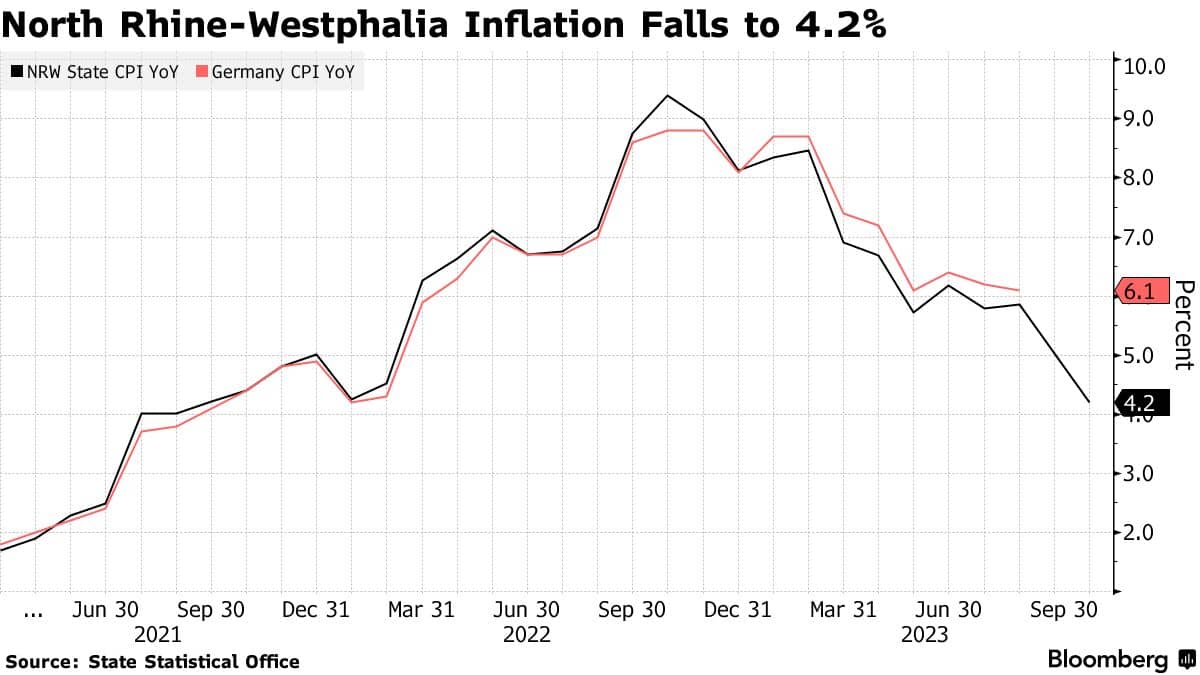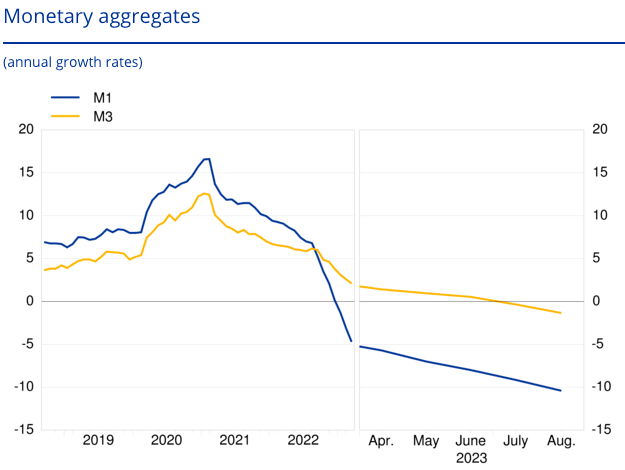Euro Softer After Spain, German Inflation Prints Undershoot
- Written by: Gary Howes

Image © Adobe Stock
Euro exchange rates are in focus over the remainder of the week as inflation prints are released from across Europe, starting in Germany and culminating with Friday's Eurozone-wide release.
Germany reported headline inflation fell 4.5% year-on-year in September, below analyst forecasts for 4.6% and markedly down on August's 6.1%.
The move lower in the Euro against the Pound and other currencies began earlier in the morning after inflation in the German state of North Rhine-Westphalia fell to 4.2% on the year in September from 5.8% in August, which represents a massive undershoot on the 5.9% the market was expecting and raised expectations that the European Central Bank (ECB) had done enough by way of raising interest rates.
"CPI inflation data releases for Germany’s regions have shown a softening in price pressures. This will support our house view that ECB has likely reached the top of its rate hike cycle," says Jane Foley, Senior FX Strategist at Rabobank.
North Rhine-Westphalia offers markets a good handle on where the national figure is heading owing to its significant population and industrial base:
Above image courtesy of Bloomberg.
Other German states then reported undershoots, with Bavaria's year-on-year figure slumping to 4.1% from 6.1% previously while coming in far below expectations for 5.9%. Hesse and Brandenburg have also undershot.
The Euro nevertheless moved higher against the Dollar to quote at 1.0538 at the time of this article's update, but we must note a broader decline in the U.S. Dollar following a blistering pace of appreciation that leaves it heavily overbought and due a correction.
Rather, it is on the 'crosses' where we can detect some idiosyncratic Euro weakness: the Euro to Pound exchange rate was down a further 0.30% on the day (adding to the previous day's loss of 0.47%) at 0.8636. The Pound to Euro was up at 1.1580.
In fact, the Euro is lower against all its peers, besides the overbaked Dollar and its tag-along the Canadian Dollar.
Spain released its national figure at 3.5% year-on-year in September, which is in line with expectations, albeit an uptick on August's 2.6%.
Fuel costs will be a major driver of the rise which makes Spain's core CPI inflation reading of more interest at -0.1% month-on-month, which will be considered an all-out deflationary signal to the ECB. Spain is interesting as analysts point out that the inflationary 'pass through' is relatively swift, therefore offering a peak at how Eurozone inflation trends over the coming weeks might trend.
"Softer core CPI in Spain (-0.1% MoM). Wheels coming off the EZ inflation bus. If this demand weakness continues, we'll be talking ECB cuts (not hikes) at turn of the year," says Viraj Patel, Macro Strategist at Vanada Research.
Foreign exchange markets have now priced in the end of the central bank hiking cycles in the major economies and are now fully focussed on the potential for rate cuts in 2024. When these cuts start and how aggressive they will be will impact bond markets and currencies.
Should the market bring forward the timing of the ECB's first cut - particularly on soft inflation dynamics - then the Euro can struggle.
The all-Eurozone release is due out Friday, but what often tends to happen is the market response is usually completed by the time German and Spain have released figures.
The falling inflation rates tie in with leading indicators that point to deflationary dynamics including yesterday's money supply data from the ECB that showed a sharp decline:
Image courtesy of the ECB.
M3 money supply - a gauge of money flowing through the economy - fell 1.3% year-on-year in August, suggesting the impact of the European Central Bank's interest rate hikes is being felt.
The implication of a falling money supply is weakened demand and, ultimately, lower inflation.
"Annual M3 growth has slowed from more than 12% in early 2021, and almost 4% at the end of 2022, to -0.4% as of July. That reflects the impact of higher interest rates," says Rhys Herbert, an economist at Lloyds Bank.
Alex Kuptsikevich, senior market analyst at FxPro, says such a contraction in money supply and credit significantly dampens the region's economic outlook.
"Unlike in the US, in Europe, most loans are made at floating rates, so an increase in the ECB's key rate simultaneously tightens the conditions for both new and existing loans. Thanks to this feature, the transmission mechanism of monetary policy works faster. As a result, fewer rate hikes are needed to cool the economy and, through it, inflation," says Kuptsikevich.
The ECB could therefore find it has tightened enough.
Compare Currency Exchange Rates
Find out how much you could save on your international transfer
Estimated saving compared to high street banks:
£25.00
Free • No obligation • Takes 2 minutes






